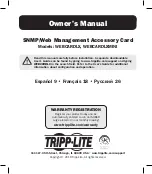
145
Chapter 13 - IP Addresses, Network Masks, and Subnets
ASUS SL1200
13 IP Addresses, Network Masks, and
Subnets
13.1 IP Addresses
This section pertains only to IP addresses for IPv4 (version
4 of the Internet Protocol). IPv6 addresses are not covered.
This section assumes basic knowledge of binary numbers,
bits, and bytes.
IP addresses, the Internet’s version of telephone numbers, are used to
identify individual nodes (computers or devices) on the Internet. Every IP
address contains four numbers, each from 0 to 255 and separated by dots
(periods), e.g. 20.56.0.211. These numbers are called, from left to right,
field1, field2, field3, and field4.
This style of writing IP addresses as decimal numbers separated by dots is
called dotted decimal notation. The IP address 20.56.0.211 is read “twenty
dot fifty-six dot zero dot two-eleven.”
13.1.1 Structure of an IP address
IP addresses have a hierarchical design similar to that of telephone
numbers. For example, a 7-digit telephone number starts with a 3-digit
prefix that identifies a group of thousands of telephone lines, and ends with
four digits that identify one specific line in that group.
Similarly, IP addresses contain two kinds of information.
•
Network ID
Identifies a particular network within the Internet or Intranet
•
Host ID
Identifies a particular computer or device on the network
The first part of every IP address contains the network ID, and the rest of
the address contains the host ID.
The length of the network ID depends on the network’s class (see following
section). Table 13.1 shows the structure of an IP address.














































